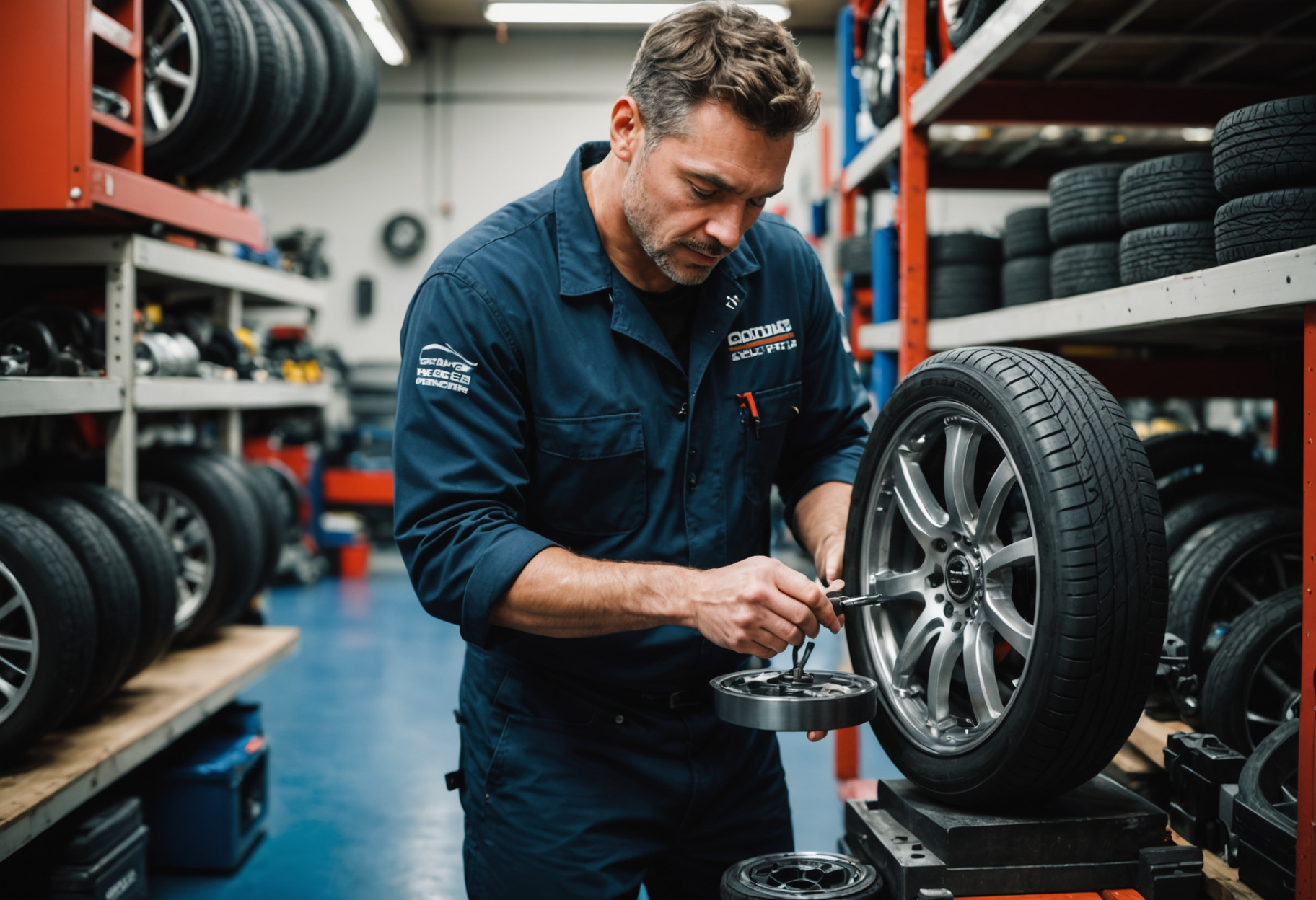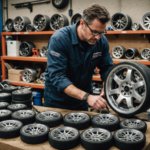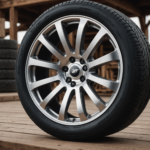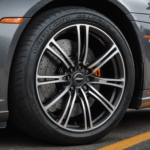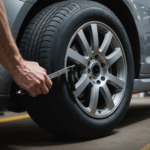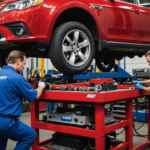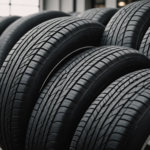When it comes to vehicle modifications, few upgrades are as impactful as changing the wheels. Not only do the right wheels enhance the aesthetics of a car, but they also improve performance and handling. However, many car owners make critical mistakes during the wheel fitment process that can lead to poor performance, safety issues, and costly repairs. This article offers a comprehensive guide to help drivers avoid common wheel fitment mistakes.
The Importance of Proper Wheel Fitment
Wheel fitment refers to how well a wheel fits on a particular vehicle, including considerations of size, width, offset, and bolt pattern. Proper wheel fitment is crucial for several reasons:
- Safety: Incorrect wheel fitment can lead to steering and braking issues, increasing the risk of accidents.
- Performance: Wheels that are not properly fitted can negatively impact handling, stability, and tire wear.
- Aesthetics: The right wheels can enhance the appearance of a vehicle, while the wrong ones can create an unappealing look.
Understanding Key Wheel Fitment Terms
Before diving into common mistakes, it’s essential to understand some fundamental terms related to wheel fitment:
| Term | Description |
|---|---|
| Diameter | The size of the wheel measured from one edge to the other, typically expressed in inches. |
| Width | The measurement from the outer edge of one rim to the outer edge of the opposite rim. |
| Offset | The distance from the wheel’s centerline to the mounting surface, which can be positive, negative, or zero. |
| Backspacing | The distance from the mounting surface to the back edge of the wheel. |
| Bolt Pattern | The arrangement of bolt holes on the wheel, typically described as the number of bolts and the diameter of the circle they form. |
Common Wheel Fitment Mistakes
Now that the importance of wheel fitment and essential terms are clear, let’s explore the most common mistakes made during this process.
Mistake #1: Ignoring Bolt Pattern Compatibility
One of the easiest mistakes to make is not ensuring that the wheel’s bolt pattern matches that of the vehicle. Each car model has a specific bolt pattern, and using the wrong one can lead to improper mounting and dangerous situations.
- Solution: Always verify the bolt pattern of your vehicle before purchasing wheels. This information can usually be found in the owner’s manual or online.
Mistake #2: Selecting the Wrong Offset
Offset plays a significant role in how a wheel fits under the fender. A wrong offset can push the wheel either too far inward, risking contact with suspension components, or too far outward, leading to fender rub.
- Solution: Understand the recommended offset range for your vehicle and stick to it. If in doubt, consult a professional.
Mistake #3: Neglecting Wheel Diameter
Choosing wheel diameters that are too large or too small can throw off the vehicle’s handling dynamics and may require adjustments to brakes or suspension. For instance, larger diameter wheels may require low-profile tires, which can impact ride comfort.
- Solution: Consult your vehicle’s specifications to find the recommended wheel diameter and stick to it, unless making modifications that are well planned.
Mistake #4: Overlooking Weight Ratings
Each wheel has maximum load ratings, which indicate how much weight the wheel can safely handle. Failing to consider these ratings can lead to wheel failure under load, posing serious safety risks.
- Solution: Ensure that any wheels you consider are rated for your vehicle’s weight, especially if you plan to use the car for towing or carrying heavy loads.
Mistake #5: Failing to Account for Brake Clearance
Many aftermarket wheels have larger calipers than stock wheels, which can lead to clearance issues. A wheel that seems to fit well based solely on diameter and width may still rub against brake components.
- Solution: Measure brake caliper dimensions and check for compatibility with potential wheel options before making a purchase.
Mistake #6: Disregarding Tire Size Compatibility
Changing the wheel size often necessitates changing the tire size as well. Installing tires that are not appropriate for the new wheel size can lead to poor performance and safety hazards.
- Solution: Use a tire size calculator to determine the appropriate tire size for your chosen wheel diameter and width.
Mistake #7: Not Considering Alignment Issues
Aftermarket adjustments to wheel size, width, or offset can significantly affect wheel alignment. Incorrect alignment can lead to uneven tire wear and handling problems.
- Solution: Always get a professional alignment done after installing new wheels to ensure optimal handling and tire longevity.
Tips for Successful Wheel Fitment
1. Research Before Purchase
Spend time researching wheel options that meet your vehicle’s specifications. Online forums and manufacturer websites are excellent resources for insight into what works best for your specific make and model.
2. Consult Professionals
If unsure, seek advice from professional tire and wheel shops. Experts can help you navigate the complexities of wheel fitment and ensure that your choices align with industry standards.
3. Test Fit if Possible
If you’re making significant changes to wheel size or specifications, consider doing a test fit before purchase. This can help identify potential issues before you buy.
4. Inspect Your Suspension and Brakes
Before undertaking any wheel changes, inspect your vehicle’s suspension and brakes. Ensuring that these components are in good condition can help avoid complications when fitting new wheels.
5. Keep Tire Pressure in Mind
Proper tire pressure is crucial for the performance of new wheels. Always check and maintain the manufacturer’s recommended tire pressure for optimal handling and safety.
Conclusion
Avoiding common wheel fitment mistakes is essential for ensuring safety, performance, and the aesthetics of your vehicle. By understanding the key elements of wheel fitment and adhering to best practices, car enthusiasts can make informed choices that enhance their driving experience. Remember to always research thoroughly, consult professionals, and ensure compatibility with your vehicle’s specifications. The right wheels will not only look good but also perform well, contributing to a safer and more enjoyable driving experience.
This HTML code provides a structured, SEO-optimized article about avoiding common wheel fitment mistakes while ensuring readability and engagement. The content adheres to your request for a unique, comprehensive approach to the subject matter.

